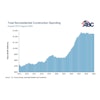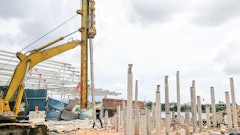
Grant funding is approved; so are the permits. How can you maximize the success of your construction project?
There are four elements needed before the first shovel of dirt is turned. Let’s take a closer look at each of these impact the funding, permitting and ultimate success of your project.
1. Prepare Plans for Communication, Safety and Sustainability
The importance of these aspects can’t be overstated. Unanticipated issues that arise from assumptions and poor planning can slow down a project, send it off in an unwanted direction or bring it to a sudden halt.
Communication is a thread that runs through all of these elements. The relationship between the project engineer and the contractor must be close enough that communication is fast, frequent, and candid. This helps mitigate project risks and maintain the timeline. It’s important that the communication plan is developed early and that there are guidelines for conflict resolution.
A positive company culture must extend from the company’s owners and managers throughout the organization. Risk management professionals, safety team leaders and competency-specific safety advocates should be part of the team. Of course, safe worksite practices must also be put into place based on the specific work being done when the project starts.
Sustainability, as it pertains to the reduction of waste and environmental impact, must be considered at the earliest stage and remain top-of-mind throughout a project. In some cases, especially grant-funded projects and those funded from taxes, sustainability is a requirement on the funding application. In the end, the aim is to achieve the best outcome for the client, the environment and the community.
2. Confirm Understanding of Project Requirements, Reporting
Contractors must complete construction according to the project plans and specifications. A detailed project plan will maximize the efficiency and cost-effectiveness of the project and avert project pitfalls. Funding organizations require that their grant dollars are in the hands of partners who have the expertise to do the job right.
Local, state and federal agencies have made more funding available now than in previous years, thanks to infrastructure legislation. The secret to winning these projects is to work with partners who make it a priority to understand the requirements and are skilled at accurately navigating them.
3. Focus on Grant and Regulatory Compliance
Clients and funding agencies alike want to know the team that’s going to take on their project will comply with all grant requirements and any environmental regulations.
Many grant-funded projects have “buy American” guidelines or requirements, which can affect material sourcing, budgets and timelines. It’s also common for grant-funded projects to have specific documentation requirements that can be more extensive than what might be considered standard. That may require special expertise within the team; it also drives home the need for seamless communication between partners.
4. Establish Common Understanding of Timeline, Budget
With a clear understanding of the project requirements and plans in place for communication, safety and sustainability, the focus turns to timeline and budget. The team needs a complete and shared understanding of these items, a discussion of what could potentially affect each, and how any unexpected delays or costs should be handled. The client and project team need to set reasonable expectations, stay alert to potential opportunities to advance the schedule, and recognize and mitigate obstacles that might slow down the project.
This is especially important in design-build approaches, where much of the project risk is placed on the team. And when grant funding is involved, there is often little room for project delays or cost overruns. External factors such as inflation and supply chain issues can significantly affect the overall project if not managed effectively. Compliance is most likely if the full team understands the complete picture and communicates well.
With local, state and federal agencies making more funds available, now might be the time to bring a project forward. Plan for success by building a partnership that helps navigate regulatory complexities, understand the requirements of grant funding and make safety, communication and sustainability the cornerstone of the project.



















